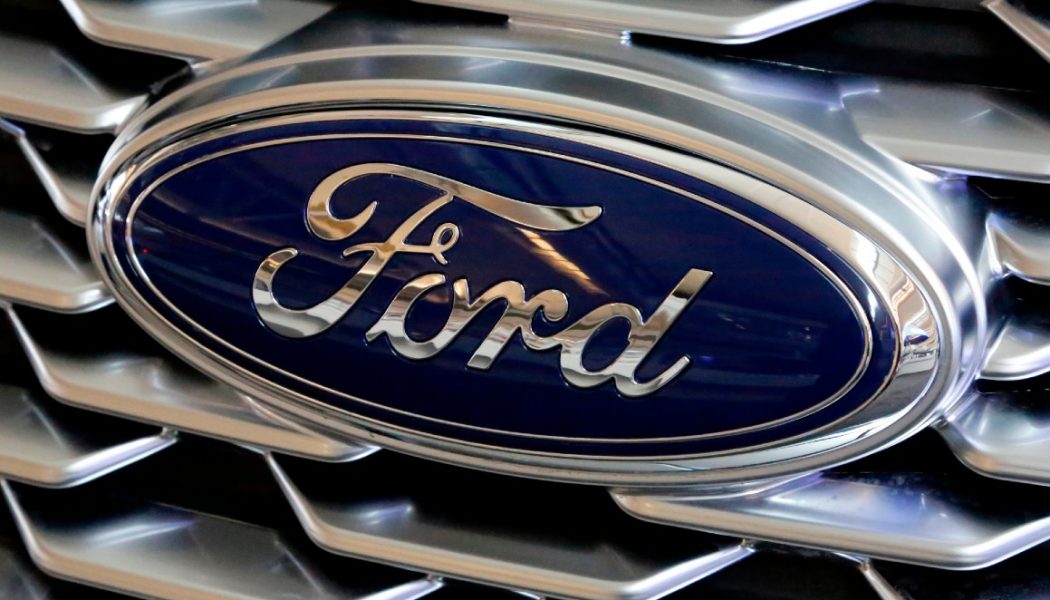After signing his executive order, Newsom seemed to welcome Trump criticism. He sent a fundraising email within hours drawing a contrast between Trump’s actions on auto emissions and his own. And he braced for a presidential tweetstorm.
“I expect a tweet within 24 hours of me signing the executive order,” Newsom said in a “Now This” video he posted Wednesday afternoon on Twitter. “I expect the usual pablum, somehow we’re taking something from people or we’re denying people choice, when in fact we’re accelerating innovation.”
Dan Becker, director of the Safe Climate Transport Campaign at the Center for Biological Diversity, said it appears California would need EPA approval to end sales of internal combustion engine cars. California has almost always been granted Clean Air Act waivers to more stringently control tailpipe pollution — but the Trump administration last year revoked its permission for California to regulate greenhouse gases from cars, casting doubt on whether it would approve this new measure as well should the president be re-elected.
“Under ordinary circumstances they would get it,” Becker said. “If Trump were re-elected, maybe not.”
The state could argue that switching to zero-emissions vehicles will significantly curb conventional pollutants, such as particulate matter and nitrogen oxides in addition to carbon dioxide. The state has struggled to meet air quality standards because of its car-heavy culture, growing population and unique geography. But it’s not clear the EPA would buy that argument either.
“This is yet another example of how extreme the left has become,” White House spokesman Judd Deere said. “They want the government to dictate every aspect of every Americans’ life, and the lengths to which they will go to destroy jobs and raise costs on the consumer is alarming. President Trump won’t stand for it.”
But Democratic presidential candidate Joe Biden also did not endorse Newsom’s order Wednesday. Spokesman Matt Hill said Biden considers a transition to electric vehicles an “enormous opportunity” to create a million union jobs and work on the climate crisis. “He’s got a plan to do that and thinks of it in terms of incentives and investments, not bans,” Hill said in a statement.
The Golden State is the world’s fifth-largest economy, with more than half of its emissions stemming from the transportation sector, so the move is expected to significantly help reduce tailpipe pollution from vehicles with internal combustion engines.
California’s influence on the market is so great that it won support last year from five automakers, who sided with the state instead of the White House on vehicle efficiency standards. One car company — Ford — went so far as to launch new ads Wednesday that call out Chevrolet, Jeep and Toyota for siding with Trump.
Newsom was clearly pleased with Ford’s support: He singled out a red electric Ford Mustang on which to sign his executive order.
“We are marking a new course,” Newsom said during the signing ceremony and press conference at the state fairgrounds in Sacramento. “We are setting a new marker. We’re advancing the cause, with the support of the California Air Resources Board, to once again lead not only this nation but in many respects lead the world.”
But it was not immediately clear if Ford and the other four automakers who signed on with California are backing Newsom’s latest executive order. The Alliance for Automative Innovation, which includes all five signatories in addition to other automakers, said in a statement that while the industry is committed to expanding electric vehicles, “neither mandates nor bans build successful markets.”
“Currently, electrified vehicles account for less than 10 percent of new vehicle sales in California,” the group said. “While that is the best in the nation, much more needs to be done for California to reach its goals. It will require increased infrastructure, incentives, fleet requirements, building codes, and much more.”
Honda, another signatory to last year’s California agreement, did not say one way or another where it stands on Newsom’s order. The automaker said in a statement that “reaching ambitious climate targets will require thoughtful collaboration between all parties.”
Under the order, California would rely on its air regulator, the California Air Resources Board, to establish rules for phasing out internal combustion engine vehicles by 2035.
Residents would still be able to own gas-fueled vehicles and sell them on the used market at that point, but the governor’s executive order is sure to give rise to questions surrounding the logistics and equity of the transition from internal combustion engines in car-dependent California. The state would join 15 other countries that are already phasing out gas-fueled vehicles.
Air Resources Board Chair Mary Nichols said Wednesday that California wants to phase out hybrid vehicles over the next 15 years and have Californians purchase fully electric cars.
“We’re not taking anything away,” Newsom said, emphasizing that used gas vehicles can still be sold in California after 2035. “We’re providing an abundance of new choices and new technology.”
Still, passing new regulations against a mountain of industry opposition will prove difficult. California business groups, from the California Chamber of Commerce to the California Manufacturers & Technology Association, criticized the executive order as unrealistic.
California Business Roundtable President Rob Lapsley said in an interview that the “radical step” to ban internal combustion engines “makes no sense” and is a rushed decision, with no guarantee of affordability for many who live in an already-expensive state.
Edison International CEO Pedro Pizarro said that his electric utility wants more to be done on economy-wide electrification, saying that the state’s recent approval of Edison’s proposed 38,000 charge ports is just a “drop in the bucket” for what’s needed to reduce emissions.
State Senator Melissa Melendez (R-Lake Elsinore) said the move would spur a backlash among California residents already struggling with the state’s high cost of living and unemployment due to coronavirus closures. She said many could perceive his order as “taking away their choice.”
State Senate Republican Leader Shannon Grove (R-Bakersfield) stressed the affordability issue and posted on Twitter an old clip of Newsom talking about his own expensive electric cars and solar panels.
Melendez said the statement was a surprise to lawmakers just 40 days from the election, and it “certainly did put more moderate Democrats in a precarious situation, having to defend what he did.”
But Democratic strategist and veteran pollster David Doak said that with so many major issues now competing for attention, “I can’t see that this is going to move things, one way or the other.” Even Wednesday, Newsom’s announcement coincided with the announcement in Kentucky that two Louisville police officers were not being charged for the death of Breonna Taylor — which was carried on California television stations instead of the governor’s press conference.
Newsom’s overall comments in support of zero-emissions vehicles in California are “relatively consistent” with Biden’s expressed support for more programs to boost their manufacture in America. And it’s no shock that on issues like this, “California tends to be the vanguard,’’ he said.
Newsom directed agencies to develop a zero-emission vehicle market development strategy by the end of January and update it every three years. He also asked them to accelerate existing efforts on charge ports.
The governor’s order also called for agencies to craft “an integrated, statewide rail and transit network,” a pronouncement that came over a year after Newsom shrunk the scope of the state’s high speed rail project. He also outlined plans to support more bicycle and pedestrian infrastructure, especially in low-income and disadvantaged communities.
Eric Wolff contributed to this report.









